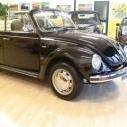Chevrolet Camaro Facelift 2013 [Coupé, Convertible]
-
Contenuti simili
-
- 4 risposte
- 937 visite
-
Citroën C4 & C4 X Facelift 2024 (Spy) 1 2 3 4 7
Pubblicato da j,
- citroen spy
- c4 spy
- (e 4 altri in più)
- 60 risposte
- 14652 visite
-
- 3 risposte
- 1272 visite
-
-
-


.thumb.jpg.902d2a4f20a129e92b6f6920407b81bd.jpg)
















.thumb.jpg.46228d717c405acd43b45b79fddce6a4.jpg)

Messaggi Raccomandati:
Crea un account o accedi per lasciare un commento
Devi essere iscritto per commentare e visualizzare le sezioni protette!
Crea un account
Iscriviti nella nostra community. È facile!
Registra un nuovo accountAccedi
Sei già registrato? Accedi qui.
Accedi Ora